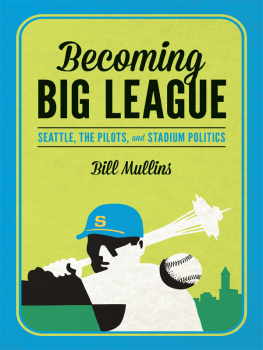Copyright 2020 by Rick Allen
All rights reserved.
No part of this book may be reproduced, or stored in a retrieval system, or transmitted in any form or by any means, electronic, mechanical, photocopying, recording, or otherwise, without express written permission of the publisher.
Published by Persistence Press, Tacoma, Washington
Edited and designed by Girl Friday Productions
www.girlfridayproductions.com
Cover design: Paul Barrett
Project management: Sara Spees Addicott
Image credits: cover Stephen Mcsweeny/Shutterstock
ISBN (paperback): 978-1-7345959-0-1
ISBN (ebook): 978-1-7345959-1-8
Library of Congress Control Number: 2020902141
To my grandchildren, Phoenix, Scarlett, Isla, and Eva:
Grandpa has a secret.
Contents
Diminutive Dr. Allen
Dictionary of Baseball Semantics
Inside pitch noun
1: a pitch thrown over the inside part of the plate, often intended to make contact with the ball more difficult for the batter
2: also known as a high hard one, thrown with intent, dangerously close to the opponent to surprise, disrupt, or startle
3: an argument or proposition made to a group by one member, often giving the presenter an edge in decision-making that may affect others outside of the group
Introduction
Bob Schoenbachler only played sandlot baseball in the Kent Valley south of Seattle. He was cut from his high school team before playing an inning. But at the ripe old age of nineteen, he found himself keeping the books for a AAA Seattle baseball team and hanging out with Jimmie Reese, Babe Ruths only roommate, who, in the process, introduced Bob to Warren Spahn, arguably the best left-handed pitcher to ever play the game. And all of this before Bob Schoenbachler ever saw a live major league game.
In a relatively short time, Bob would find himself named the comptroller of the newly formed 1969 Seattle Pilots Major League Baseball (MLB) team, the only team in MLB history to go bankrupt after one year and be spirited off to another city. The bankruptcy wasnt because of Bobs youth and inexperience as a twenty-one-year-old comptroller, but well get to that dizzy journey shortly.
Bobs quick ascent to a key position on a major league team was only the beginning of a truth-is-stranger-than-fiction meteoric rise and adventure as a twentysomething trusted insider. He was in possession of such sensitive financial information that he could have easily ended up testifying in court if anything went awry... which, in fact, it did.
Meanwhile, Jim Kittilsby was seemingly born to baseball. A good shortstop in his hometown of Kalispell, Montana, he was good enough to play college ball as an outfielder at Pacific Lutheran University in Tacoma, Washington. Unlike Bob Schoenbachler, with his unlikely path to the Seattle Pilots, Kittilsby was on an intentional baseball beeline. After administrative stints with both AAA and major league teams, he arrived as a twenty-nine-year-old administrator with the Pilots, coming over from the San Francisco Giants, with baseball in his blood.
As a Pilots administrator, within months Jim Kittilsby was loaded with multiple titles and responsibilities as a result of crazy goings-on behind the scenes with the Pilots, as well as Jims well-earned reputation as a get it done baseball guy.
During their careers in the game in Seattle and later in the early transition to Milwaukee, both Bob and Jim dealt with everything from crazy to crazy-like-a-fox general managers, wily and wobbly major league owners, quirky and not-so-quick midlevel counterparts, and other so-called leaders in MLB ownership, at least one apparently so drunk that he could barely stand.
Ball Four, the infamous and groundbreaking book by pitcher Jim Bouton, revealed the startling behind-the-curtain truth of the lives of baseball players on the 1969 Seattle Pilots and other teams. It broke barriers and shook the foundation of the game. Ironically, which very young Seattle Pilots administrator was asked by Jim Bouton in 1969 to unknowingly mimeograph copies of Ball Four as it was being written? Yep. Bob Schoenbachler.
Inside Pitch reveals insider secrets on the administrative side of the game during the same era, and in fact, with the very same team: the one-year-wonder 1969 Seattle Pilots.
Who do you think was observing their own peers and often bumbling sidekicks as young men of twenty-one and twenty-nine suddenly hoisted into major positions in Major League Baseball at a critical time in the evolution of the game? Bob Schoenbachler and Jim Kittilsby.
And who ended up moving to Milwaukee and working for that new team when the Pilots were sold out from under Seattle during spring training 1970? Again, Bob Schoenbachler and Jim Kittilsby. Both Bob and Jim made the transition to the start-up 1970 Milwaukee Brewers, a new team with its own set of surprising administrative eye-openers, also chronicled here.
Who ended up alone in Tempe, Arizona, in April 1970, closing down the last remnants of the Pilots and simultaneously taking instructions from the bankruptcy court in Seattle as well as Milwaukee attorneys while trying to get into his padlocked offices? Jim Kittilsby.
Who worked as new Milwaukee owner Bud Seligs finance guy and watched as Seligs Ford dealership purchased tickets to give away and keep people in the bleachers as attendance plummeted in the early years after the 1970 transition to Milwaukee? Bob Schoenbachler.
And who ended up as the commissioner of baseball several years later? Nope, not Bob. Not Jim. But Bud Selig, their Milwaukee boss, did.
Owners, general managers, and assistant GMs, public relations guys, minor-league administrators, team lawyers, and even secretaries (the title used at the time)none should be digging in at the plate for a comfortable at-bat as they read through this book. A high hard one is about to whiz by a few ears as Bob Schoenbachler and his administrative cohort Jim Kittilsby dust off remarkable memories to reveal stunning insider secrets from fifty years ago.
To baseball fans, though, Inside Pitch will help to close out a complete game. Bob and Jim reveal funny facts and surprising inside stories about the not-so-smooth administrative functioning of Americas pastime with the one-year Seattle Pilots and then the start-up Milwaukee Brewers.
Take a road trip back in time and read some hilarious new insights on why the Pilots floundered their way into bankruptcy in a single season and headed east for Milwaukee in the spring of 1970.
1
Early Signs of a Major League Baseball Chief Financial Officer
Bob Schoenbachler was born in 1947, the year Major League Baseball was finally integrated and Jackie Robinson suited up for the Dodgers.
Bob grew up in the Kent Valley south of Seattle in Washington State. At the time, and into the late 1950s, the fields of the valley, which more recently held much of Boeing, the multinational airplane manufacturing company, were fertile land, sweeping tracts of agriculture and smaller family farms. The fields were worked by Filipinos, Japanese, and Mexicans, both adults and kids. Anglo kids often worked alongside them on the farms owned by their families. Workers, parents, and kids alike shared a strong work ethic fueled by a survival instinct developed during World War II, an ethic that was helping America become a world leader in the precomputer age as the rest of the world was in recovery.













